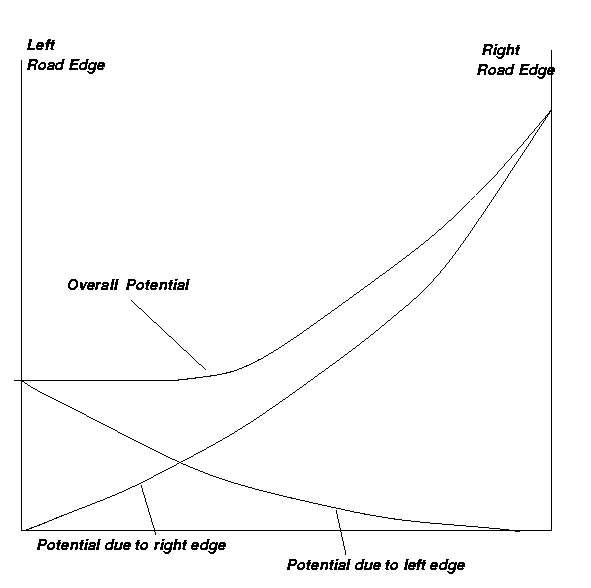METHODOLOGY
In the present project we have tried to predict the motion of the vehicle when the intention of the driver is to overtake the vehicle going ahead of it. Here, we are assuming that the motion (i.e. speed and position at each point of time) of the leading vehicle is given at each instant of time. The path planner also knows the geometry of the environment in which the vehicles are moving, which includes the width of the road and the distance of the left and right road edges. The steps that are followed are as follows
- Firstly, we have transformed the given traffic scene to a three dimensional (x,y,theeta) configuration space, in which the two dimensional car reduces to the point. Because of the steering facility available in the car, which imparts it the rotational motion, the reduced point has three dimentional motion. The car in the task space can move only in certain direction, so can the reduced point. The polar-plot algorithm is used in finding out the c-space of the scenario.
As the obstacle moves in taskspace, the corresponding c-obstacle move such that they are transformation at all time.
- A potential function is assigned to each road edge and the obstacle using the potential field method.
The potential due to road edges should have the following qualities :
- As we go away from the road edge, the potential should decrease.

- The potential function should be different for left and right edges in such a way that overall minima should lie near the left edge of the road.
- As the velocity at a point is inversly related to the potential of that point, the minima should be high for the narrower road than the wider road. This is in agreement of the common observation that cars are driven slowly on the roads of low width.(Fig) Based on above characteristics the following function is proposed by [1]
constant * exp(-x/ b)
The potential function of the other obstacle( either stationary or moving vehicles ) should be eye shaped..It should protrude more in the direction of the approaching vehicle(robot), and should die out faster in the opposite direction. The resultant function should asymmetric when viewed across cross-section bb' and symmetric along aa'. This accounts for the fact that the driver starts considering the effect of the leading vehicle from quite a distance, while approaching it.
The function which we are using has the following qualities:Along the crosssection aa' it looks like the function (constant)exp(-x2/sigma)
Through the section bb' it looks like (constant)exp(-x2/sigma)

- The robot will then be moved from one position to the next, along the direction given by the "Cone of Accessibility".At each point in the robots path the set of points which are accessible by it, form the base of a cone(shown by darker lines in the figure).The sides of the cone are proportional to velocity.The next position is determined by the point of minimun potential.
/ Introduction / Literature Review / Methodology / Example/ M ain Menu / References /